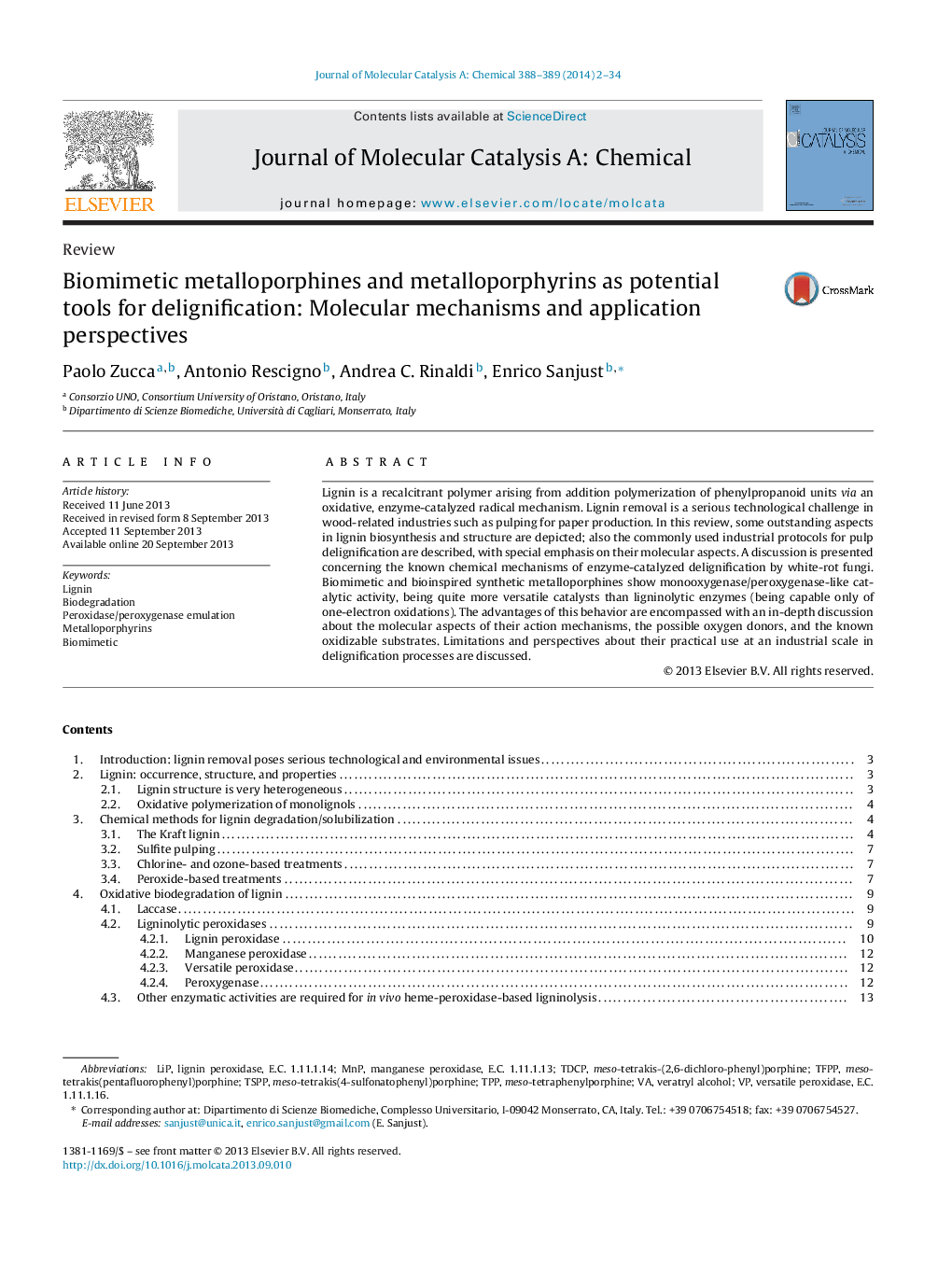| Article ID | Journal | Published Year | Pages | File Type |
|---|---|---|---|---|
| 65557 | Journal of Molecular Catalysis A: Chemical | 2014 | 33 Pages |
•Lignin is a structurally complex and chemically resistant plant macromolecule.•Chemical delignification implies harsh conditions and high environmental impact.•White-rot fungi have enzymatic machineries allowing oxidative delignification.•Selected metalloporphines act as peroxidase/peroxygenase-like systems in ligninolysis.•Biomimetic metalloporphines show drawbacks and advantages in comparison to enzymes.
Lignin is a recalcitrant polymer arising from addition polymerization of phenylpropanoid units via an oxidative, enzyme-catalyzed radical mechanism. Lignin removal is a serious technological challenge in wood-related industries such as pulping for paper production. In this review, some outstanding aspects in lignin biosynthesis and structure are depicted; also the commonly used industrial protocols for pulp delignification are described, with special emphasis on their molecular aspects. A discussion is presented concerning the known chemical mechanisms of enzyme-catalyzed delignification by white-rot fungi. Biomimetic and bioinspired synthetic metalloporphines show monooxygenase/peroxygenase-like catalytic activity, being quite more versatile catalysts than ligninolytic enzymes (being capable only of one-electron oxidations). The advantages of this behavior are encompassed with an in-depth discussion about the molecular aspects of their action mechanisms, the possible oxygen donors, and the known oxidizable substrates. Limitations and perspectives about their practical use at an industrial scale in delignification processes are discussed.
Graphical abstractFigure optionsDownload full-size imageDownload high-quality image (161 K)Download as PowerPoint slide
